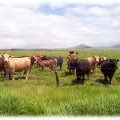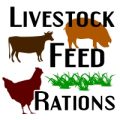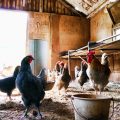The decisions you make at the grocery store have an effect on the natural world. Many people don’t realize the impact that agriculture and food production have on the environment or how much they can help with their purchasing decisions. Let’s take a closer look.
50% of the habitable world is used for agriculture. Agriculture requires 70% of the world’s freshwater supply and that food represents ¼ of all greenhouse gas emissions. Until relatively recently, most of the earth was wilderness, including grasslands, forests and deserts. Over the last few hundred years, however, as people have turned to agriculture to grow the food necessary to support human life, wild habitats have been replaced by farmland.
Agriculture also has an impact on wildlife — excluding humans, livestock makes up more than 90% of the mammal biomass on earth, outweighing wild mammals by more than 15 to 1. In fact, agriculture has a major influence on the majority of the 28,000 species of wildlife threatened with extinction. Livestock requires much more land than crops grown for human consumption. Pastures and farms that grow animal feed account for more than three quarters of all agricultural land, even though they produce less than 20% of the total calories consumed by people. Eating less meat and using plant-based alternatives could help reduce the number of livestock required to feed people throughout the world and lessen the impact on the environment.
For more ways you can do your part in protecting our natural world through your food choices, continue reading the infographic below!
The Impact of Your Groceries on the Environment from GreenRabbit.





